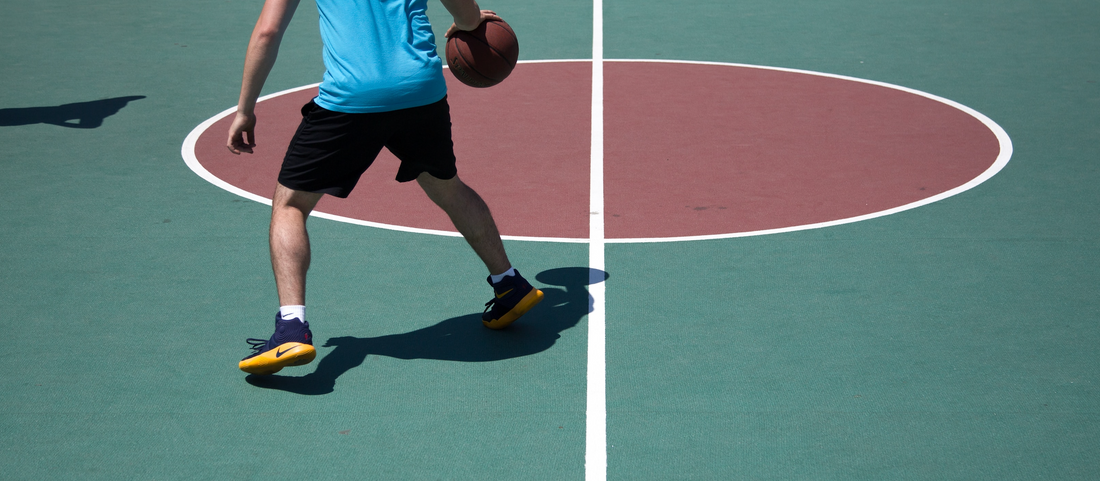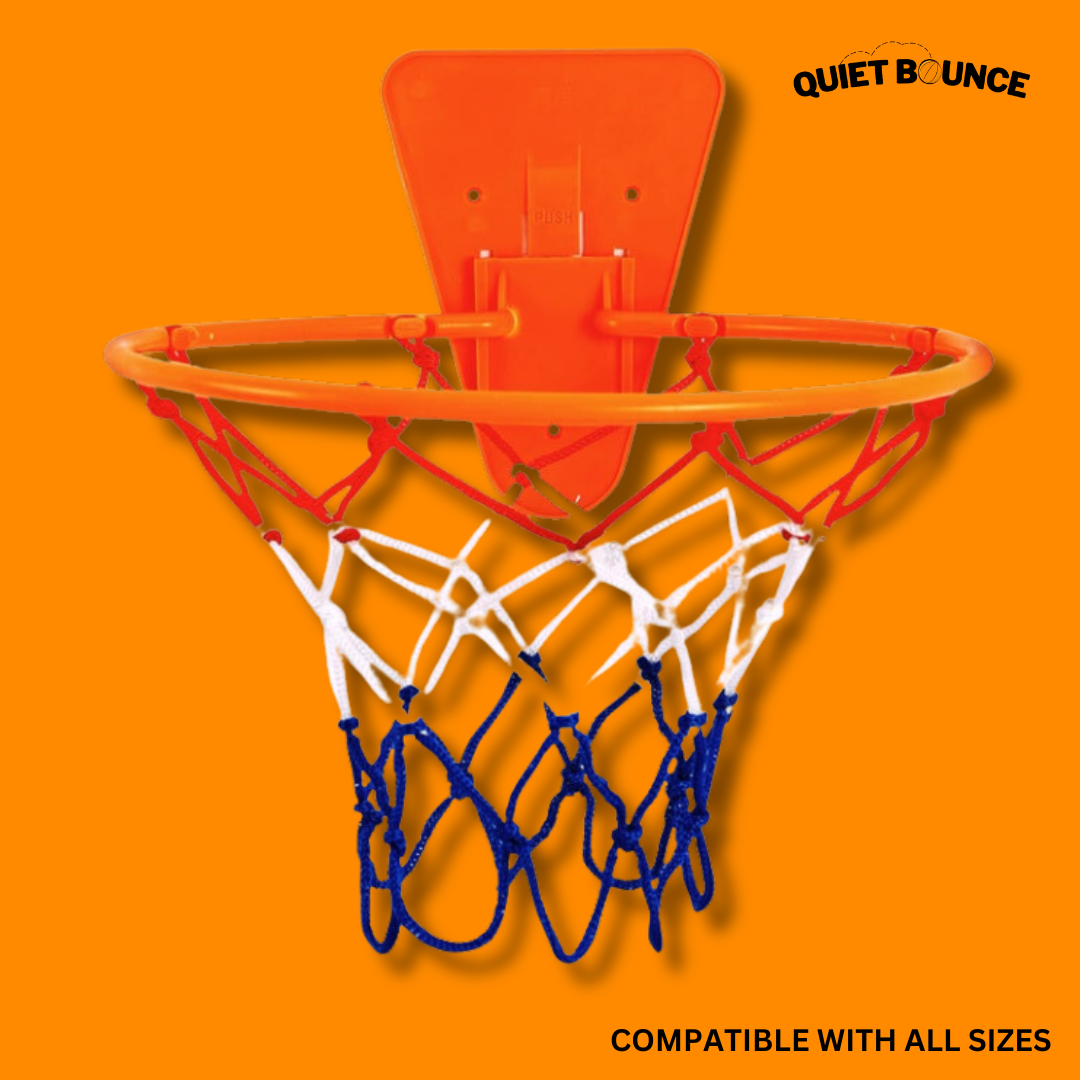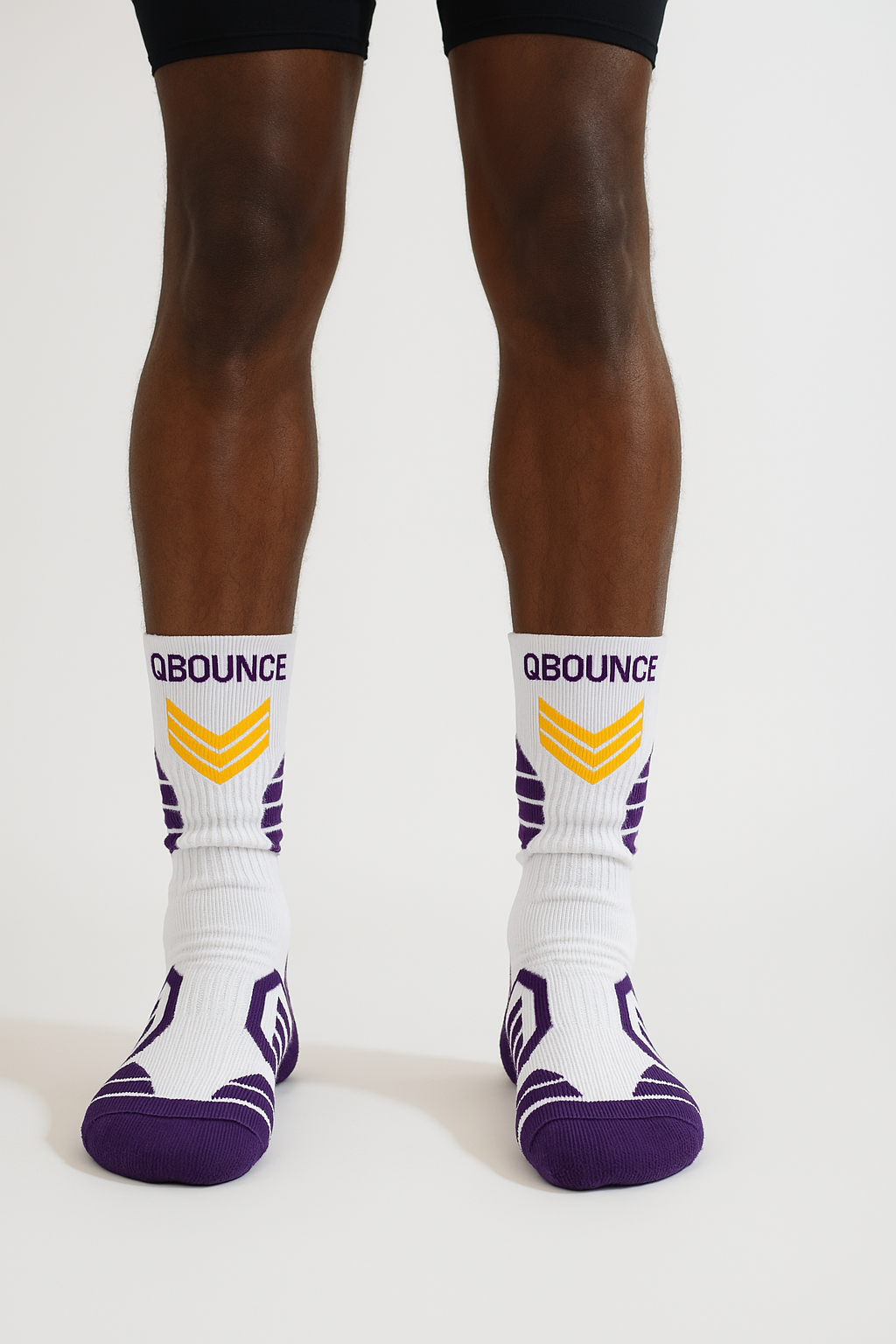
15 Best Basketball Dribbling Moves
Share
Whether you're a beginner or an experienced player, having a diverse set of dribbling moves in your arsenal is crucial to outmaneuvering your opponents and creating scoring opportunities. Here we’ve laid out some of the best dribbling moves in the game, ranging from the basics all the way up to expert-level maneuvers. So, get ready to take your game to new heights and dominate the court with these essential basketball dribbling and ball handling moves!
The Fundamentals of Dribbling in Basketball
Effective dribbling and good ball handling skills go hand in hand, so if you want to be able to pull off more advanced moves on the court, it’s imperative you master dribbling first. When it comes to forming the foundation of an effective dribble, here are key fundamentals worth reviewing.
- Hand placement and control: Place your dominant hand on top of the basketball, with your fingers spread comfortably. Maintain control by using your fingertips, rather than the palm of your hand, as you practice dribbling.
- Body positioning: Keep your knees slightly bent and your back straight. This low, athletic stance will provide better balance and stability while dribbling. Stay on the balls of your feet, ready to move in any direction.
- Eye focus: Maintaining proper eye focus is crucial for reading the defense and making quick decisions on the court. Keep your head up and your eyes forward, scanning the court for open teammates or potential scoring opportunities. Avoid looking at the ball while dribbling to maintain court awareness.
- Dribbling height: The height at which you bounce the basketball is important for both control and speed. Generally, dribbling the ball around waist height allows for better control and reduces the risk of turnovers. However, there will be situations in which you need to dribble lower or higher based on the defense or offensive strategy.
- Dribbling speed and rhythm: Developing a consistent dribbling speed and rhythm is crucial for keeping defenders off balance and maintaining control of the ball. Practice changing the speed and intensity of your dribbles to create hesitation and confusion for defenders. Find a natural rhythm that suits your style of play.
- Protecting the ball: Keep your body between the ball and the defender, using your off-arm as a shield. Practice using your body to protect the ball while maintaining control and court vision.
- Dribbling with both hands: To become a well-rounded player, it’s crucial to develop proficiency in dribbling with both hands (one at a time). Practice dribbling basketball drills that focus on strengthening your non-dominant hand. This will increase your overall ball control and make you a more versatile player on the court.
Essential Moves for Game Situations
Some dribbling moves are specifically designed to be effective in various game scenarios. By mastering these moves, you will gain the ability to navigate through tight defense, create scoring opportunities in fast break situations, deceive defenders, and create space to attack or reset the offense.
- “Control dribble” for close defense situations: When faced with tight defense, this move allows you to protect the ball and maintain control. Keep your body low and use your non-dominant hand as a shield while dribbling the ball with your dominant hand.
- “Speed dribble” for fast court movement: In fast break situations or when trying to push the pace of the game, this is a go-to move. This involves dribbling the ball with maximum speed and intensity, using long, powerful strides to cover ground quickly. Keep the ball low and close to your body.
- The classic “crossover dribble”: This is one of the most effective moves for creating space and beating defenders. Start by dribbling the ball with your dominant hand, then quickly and smoothly transfer the ball to your non-dominant hand by crossing it over in front of your body. This move is executed by stepping laterally with the foot opposite to the hand you are dribbling with.
- “In and out dribble” for deception: This move is designed to freeze defenders and create opportunities to attack. Dribble the ball with your dominant hand and then quickly shift the ball to your non-dominant hand using an outward motion, as if you are going to crossover. However, instead of completing the crossover, quickly bring the ball back to your dominant hand with an inward motion.
- “Hesitation dribble” to confuse defenders: This move involves momentarily slowing down or hesitating while dribbling, then quickly exploding past the defender. Use a quick, subtle hesitation with your body and a change of pace in your dribble to momentarily freeze the defender.
- The evasive “spin move”: This move allows you to quickly change direction and evade defenders. Start by dribbling the ball with one hand, then plant your pivot foot and spin in the opposite direction, using your body to shield the ball from the defender. As you complete the spin, transfer the ball to your other hand and explode towards the basket.
- “Back-up dribble and crossover” for retreat situations: This move is valuable when you need to create space to reset or find an open teammate. Start by dribbling backward, away from the defender, while keeping the ball low and close to your body. Then use a crossover dribble to change direction and attack again.
Elite Crossover Moves
Certain advanced moves go beyond the basic crossover dribble and will help you create separation from defenders, break ankles, and open up scoring opportunities. Add these elite crossover moves to your repertoire to become an even more formidable offensive threat.
- “Through the legs”: Start by dribbling the ball with your dominant hand, then quickly cross it over to your non-dominant hand by dribbling it through your legs. Step laterally with the foot opposite to the hand you are dribbling with. This crossover confuses defenders and creates space for a shot or a drive to the basket.
- “Behind the back”: As with the “through the legs” move, you want to dribble the ball with your dominant hand, then quickly transfer it to your non-dominant hand — but this time, you pass it behind your back. At the same time, step laterally with the foot opposite to the hand you are dribbling with.
- “Through the legs” + “behind the back”: Combine the “through the legs" and "behind the back" maneuvers to add an extra layer of deception to your ball handling. This sequence of moves can leave defenders guessing and create time and space for a shot or a drive toward the net.
- “Killer crossover”: Begin by dribbling the ball with your dominant hand, then execute a swift and powerful crossover dribble to your non-dominant hand. The key is the speed and explosiveness of the move, combined with a low power dribble and a sharp change of direction.
- “Hesitation crossover”: Start by dribbling the ball with your dominant hand, then slow down your dribble and hesitate for a brief moment, freezing the defender. Suddenly explode into a powerful crossover dribble to your non-dominant hand, using a quick change of direction to catch the defender off guard.
- “Shamgod crossover”: Start by dribbling the ball with your dominant hand, then quickly shift the ball to your non-dominant hand with a flick of the wrist, while simultaneously stepping in the opposite direction with your non-dominant foot. This is a highly effective move for creating separation from defenders.
Expert Maneuvers
These expert dribbling techniques require a higher level of skill, coordination, and timing. Work toward incorporating these moves into your game if you want to really become a threat to the opposing team.
- “Trap dribble”: When you’re being closely guarded or trapped by defenders, use your body to shield the ball from the defense while dribbling in a controlled manner. Keep your body low and use your forearm to create space between you and the defender, ensuring they can’t easily steal the ball.
- “Trap dribble/crossover”: Start by executing a “trap dribble” to protect the ball from the defense. As the defenders try to close in, quickly transition into a “crossover dribble,” changing direction and leaving the defenders behind. This move is effective in tight and pressured situations, allowing you to maintain control of the ball.
Mastering these basketball dribbling and ball handling moves will take time, patience, and dedication. However, the effort you put into refining your skills will undoubtedly pay off in your performance on the court. So, continue to practice basketball drills that challenge you and keep striving for improvement. With perseverance, you will elevate your ball handling skills and become a standout player in every game.




